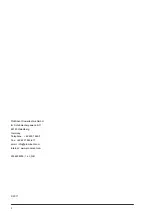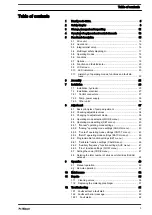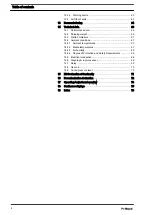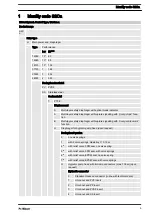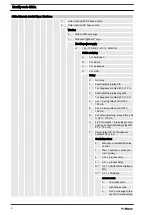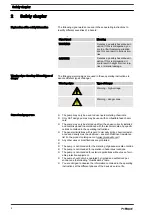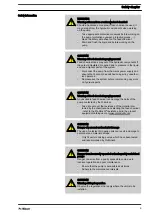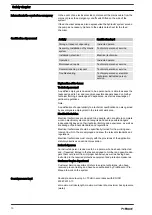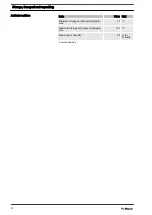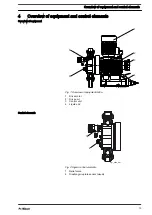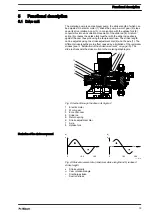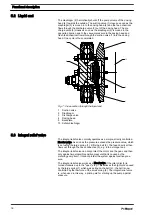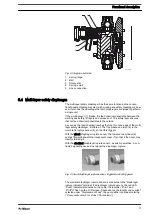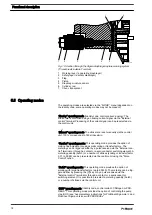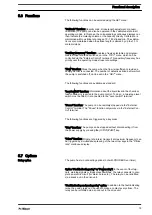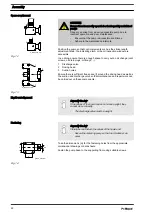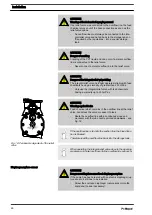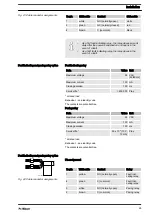
5.2 Liquid end
The diaphragm (2) hermetically shuts off the pump volume of the dosing
head (4) towards the outside. The suction valve (1) closes as soon as the
diaphragm (2) is moved in to the dosing head (4) and the feed chemical
flows through the discharge valve (3) out of the dosing head. The dis‐
charge valve (3) closes as soon as the diaphragm (2) is moved in the
opposite direction due to the vacuum pressure in the dosing head and
fresh feed chemical flows through the suction valve (1) into the dosing
head. One cycle is thus completed.
4
2
1
5
3
13
Fig. 7: Cross-section through the liquid end
1
Suction valve
2
Diaphragm
3
Discharge valve
4
Dosing head
5
Backplate
13 Safety diaphragm
5.3 Integral relief valve
The integral relief valve normally operates as a simple, directly controlled
bleeder valve. As soon as the pressure exceeds the pressure value, which
is set using the large spring (1), it lifts the ball (2). The feed chemical then
flows out through the hose connection (5), e.g. into a storage tank.
The integral relief valve can only protect the motor and the gear, and then
only against impermissible positive pressure that is caused by the
metering pump itself. It cannot protect the system against positive pres‐
sure.
The integral relief valve works as a bleed valve if the rotary dial (3) is
turned clockwise up to the "open" stop: This relieves the high force caused
by the large spring (1) which was acting on the ball (2) - the ball is now
controlled by the low force of the small spring (4). The integral relief valve
is, when used in this way, a priming aid for starting up the pump against
pressure.
Functional description
16

